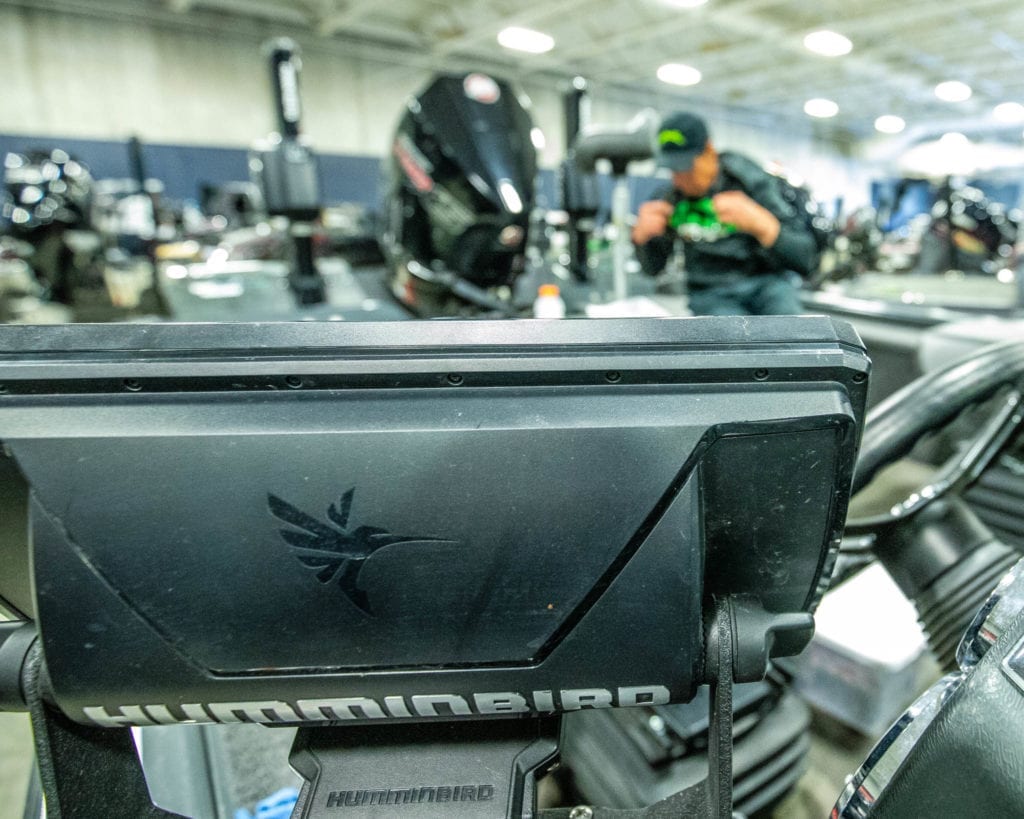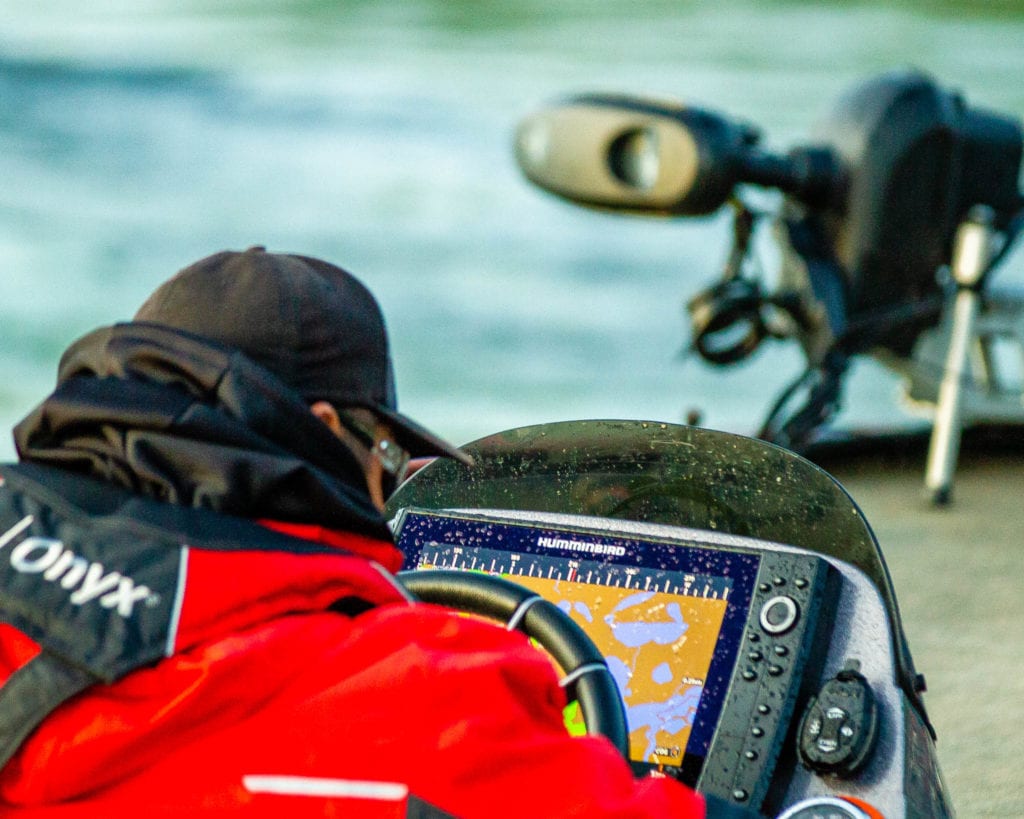We sat down with a few of our Champions Tour anglers to get some helpful pointers and insight on how they set up their Humminbird electronics. These guys are all about efficiency and making the most out of their time on the water. By having their Humminbird units dialed in, they can and will spend more time fishing key fish holding structure.
As soon as veteran Tour angler Mark Courts gets his Humminbird units installed he goes into his settings and changes the Angler Mode to Custom Mode, as this will give you a lot more options on your units.
“One of the questions I always get asked is, what’s your sensitivity set at?”
“First, I switch my unit from Clear Mode to Max Mode, you will have to adjust your sensitivity throughout a fishing day depending upon water clarity and particles in the water (i.e. algae or muddy water),” explained Courts. “For example, while fishing the calm side of the lake I might have to have my sensitivity on 15, but if I move to a windy shoreline where it is muddied up or the algae has moved in I might have to turn my sensitivity down to 10.”

Champions Tour angler and Great Lakes smallmouth wizard Adam Rasmussen gets the most out of his MEGA360 by zooming in on his screen. “By pressing the + button on your unit, you are able to zoom in and utilize more of your screen.”
Being able to put your boat in the key depth zone when fishing and keeping it out of the dangerous areas when traveling are both important to having a great day on the water. With the Depth Highlight and Shallow Water Highlight features on the Humminbird units with the LakeMaster card, you can do this very easily. “I always set my Shallow Water Highlight to five feet, I do this as a safety measure, as most bodies of water have logs, rocks, etc that can be just under the surface in shallower water,” explained Rasmussen. “When I am catching bass in a certain depth, I can highlight that range and quickly see the “sweet spots” on my mapping by setting my Depth Highlight to that depth, plus or minus a few feet.”

Without question Side Imaging is a great way to take a quick look at an area before you even wet a line. By setting the correct range when Side Imaging, you will be able to make the most of your time looking at the screen. “If I am looking for a piece of structure, but do not know exactly where it is, I will keep my range out further (200-300′). Once I have marked this “spot” I will drop my range down (70-100′), this will give me a more detailed picture, as well as allowing me to see fish,” explained Adam.
One of the most common questions tournament anglers get in regards to their electronics, besides if they get Netflix, is why they have multiple units. For Rasmussen he has one set up 2D sonar, one with his map, and the other with 360 or Side Imaging.

















